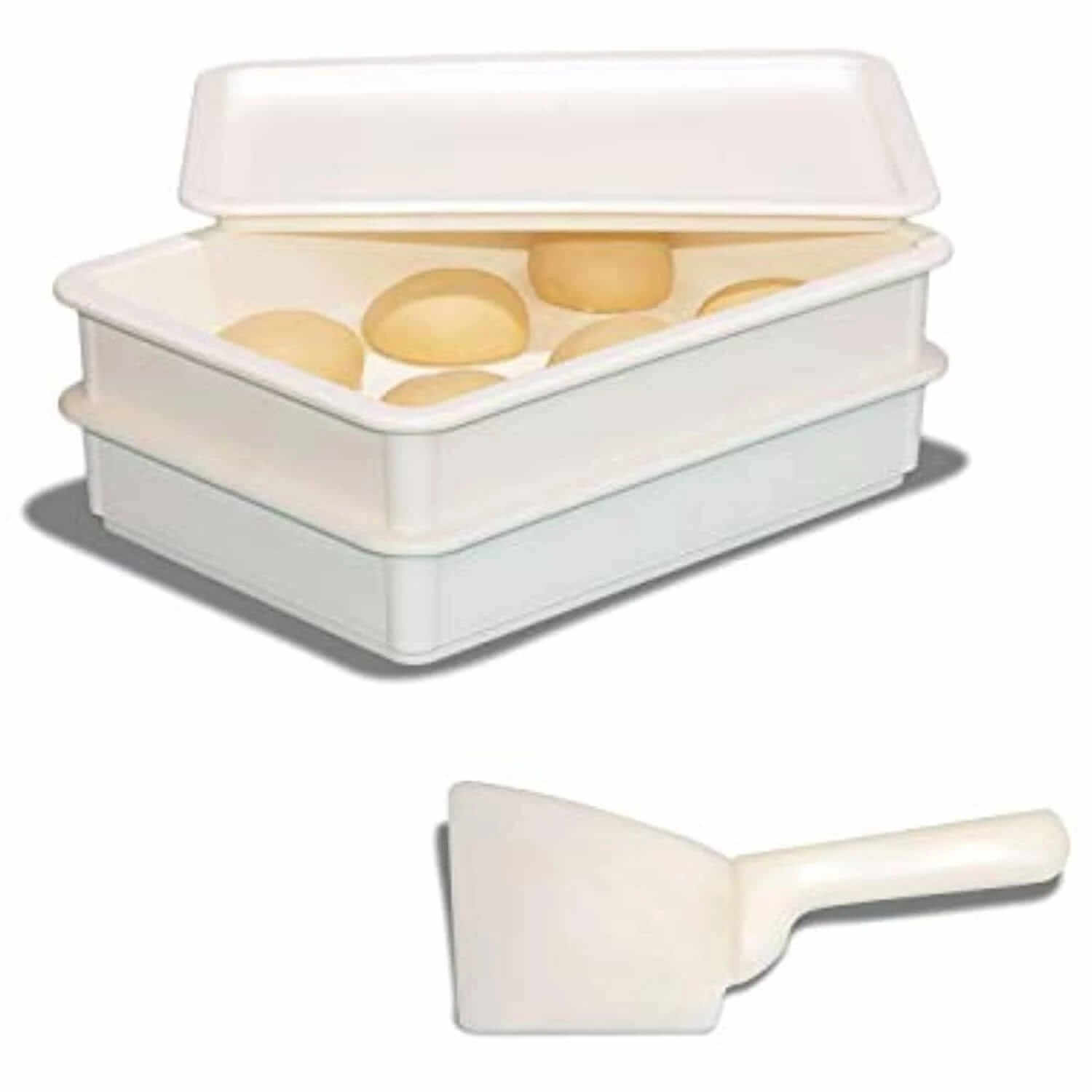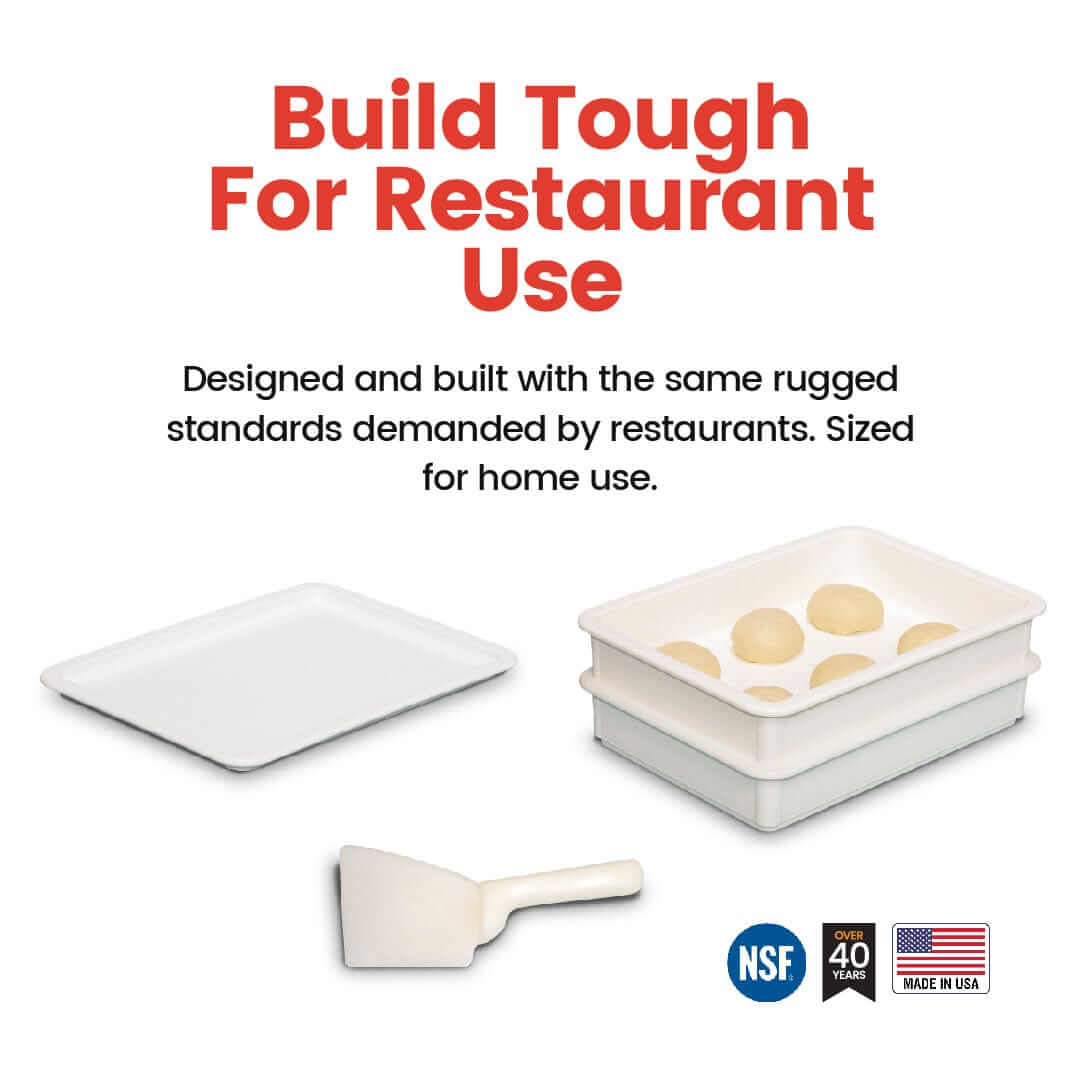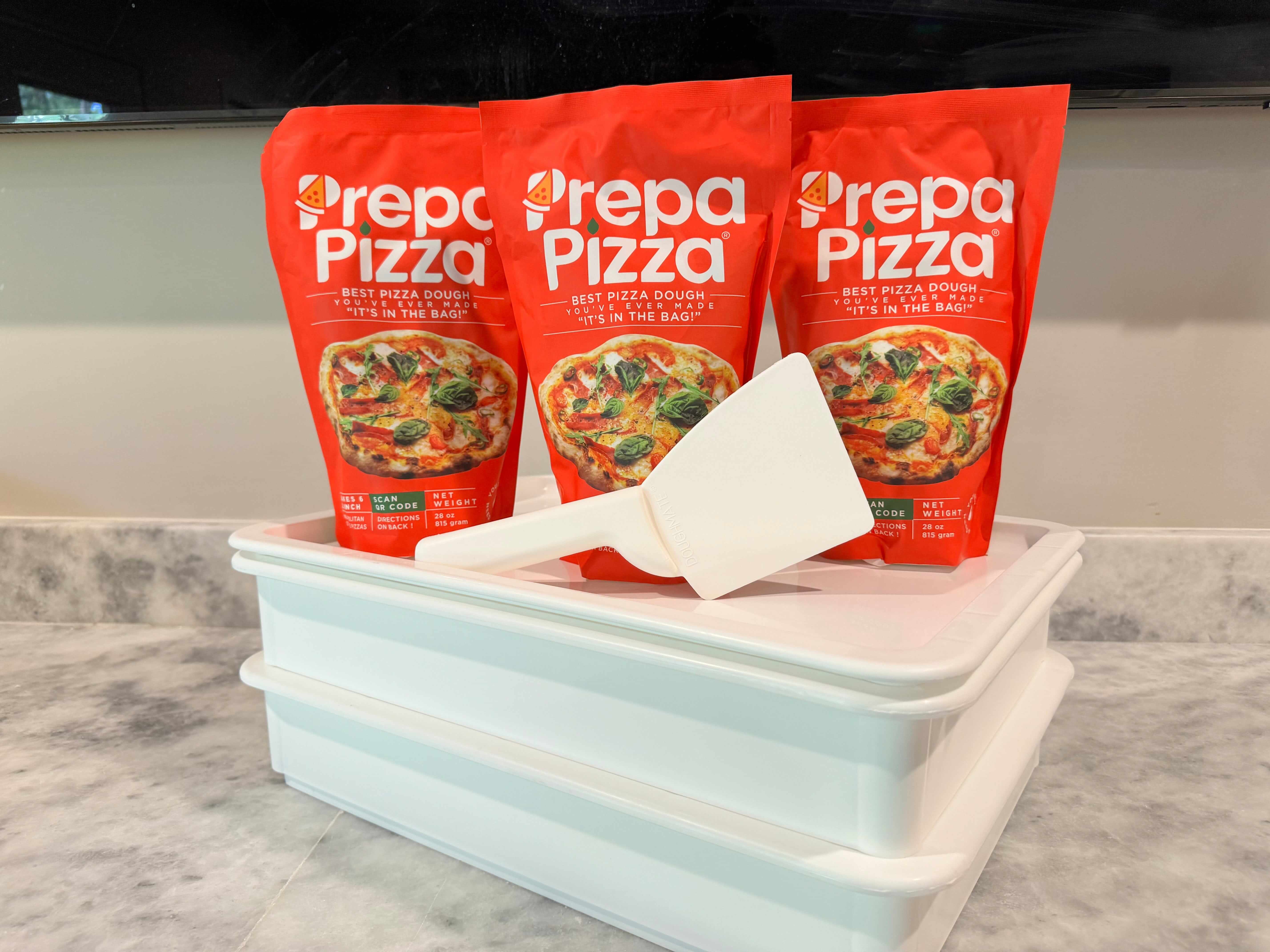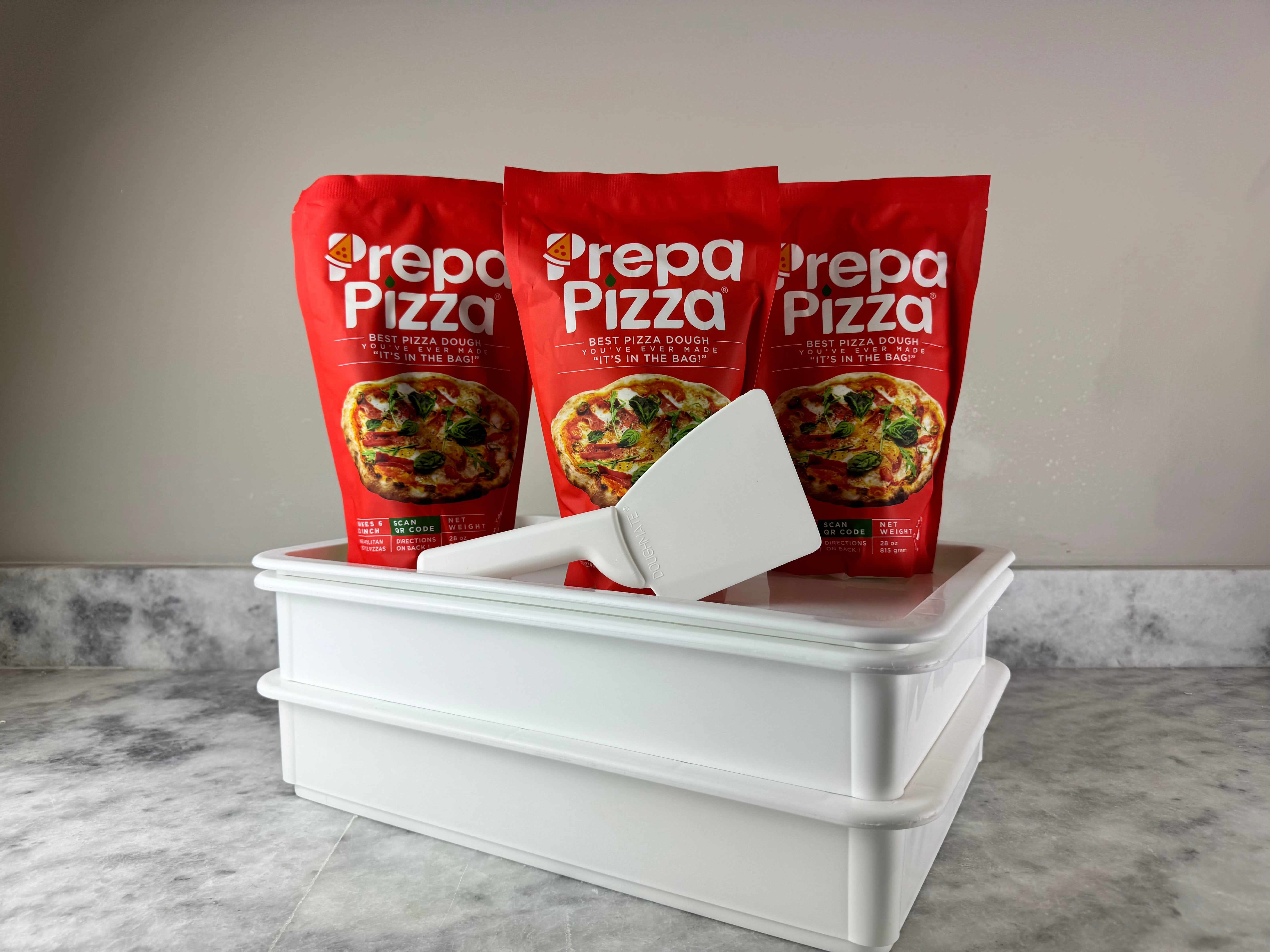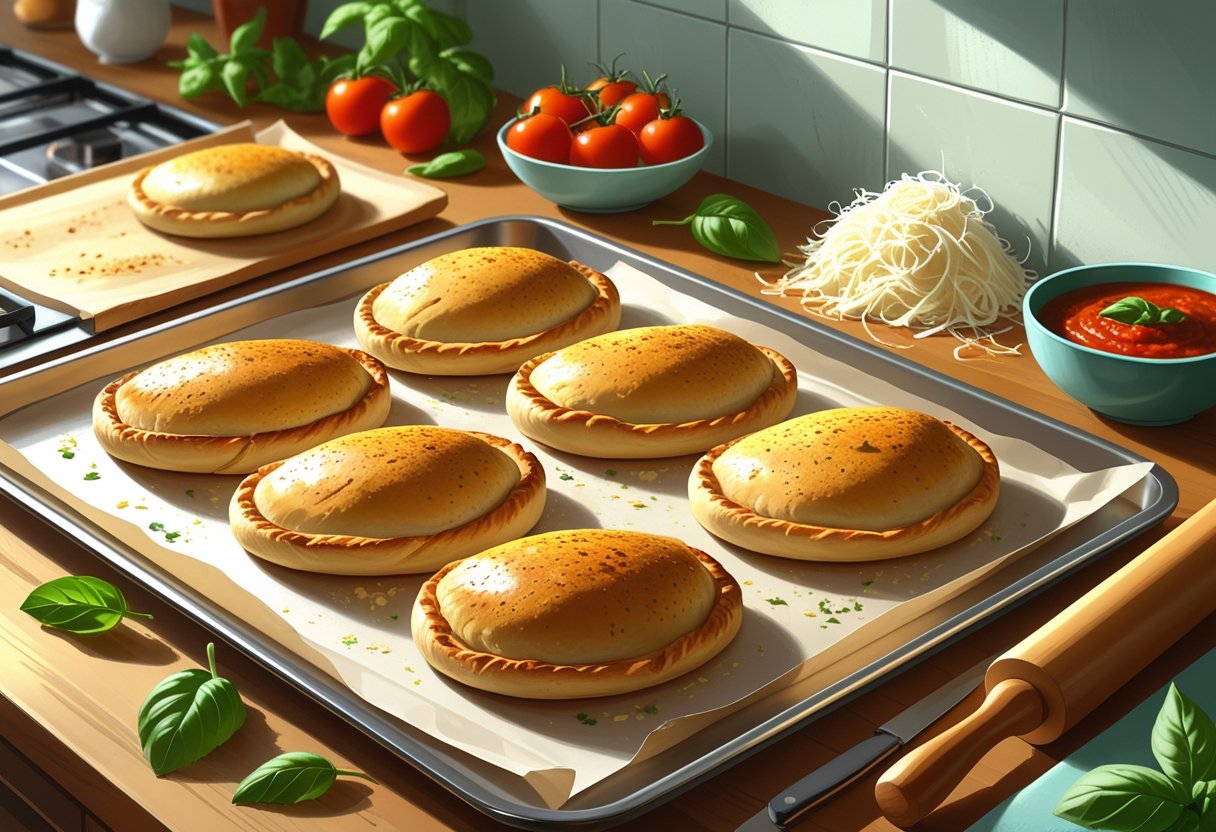
Homemade Calzones With Store Bought Dough Easy Steps for Perfect Results
Making homemade calzones with store-bought dough is an easy way to enjoy a fresh, delicious meal without the hassle of preparing dough from scratch. By using premium quality dough like Prepa Pizza’s premade dough, you ensure your calzones have the perfect texture and flavor every time. Their restaurant-quality ingredients give you a reliable base, making it simple to create tasty calzones at home. You can find their dough kit here.
Using Prepa Pizza’s premade dough lets you focus on filling your calzones with your favorite ingredients, saving you time without sacrificing quality. Whether you're a beginner or an experienced cook, this dough provides the consistent foundation needed to fold, fill, and bake calzones that are crispy on the outside and soft inside.
With this approach, homemade calzones become a quick and convenient meal option that still feels special. Having Prepa Pizza dough on hand turns the process into a fun and manageable cooking project, perfect for any day of the week.
Why Use Store Bought Dough for Homemade Calzones
Using store bought dough can simplify your calzone-making process without sacrificing quality. It offers convenience, consistency, and high-grade ingredients that support creating restaurant-quality calzones at home. Prepa Pizza's premade dough kit, for example, delivers premium dough made with carefully selected ingredients, ensuring reliable results every time you bake. You can explore their offerings directly at Prepa Pizza Dough Kit.
Selecting the right dough matters because it affects everything from texture to cooking time. By choosing a premium option like Prepa Pizza’s dough, you avoid the uncertainty of homemade pizza dough preparation while still enjoying fresh, delicious calzones quickly.
Advantages of Store Bought Dough
Store bought dough saves you significant time, eliminating the need to mix, knead, and proof dough yourself. This allows you to focus on fillings and assembly rather than the dough preparation process.
The consistency in texture and flavor is another key benefit. Brands like Prepa Pizza maintain quality through premium ingredients and expert processing. This consistency means you get the same soft yet chewy crust every time, which can be harder to achieve with homemade pizza dough unless you're highly experienced.
Store bought dough also simplifies ingredient control because quality brands avoid artificial additives or preservatives. This means healthier results without the guesswork of sourcing and mixing flour, yeast, and other components.
Choosing the Best Pizza Dough
When picking a store bought dough, check for ingredient transparency and the use of high-quality components. Premium doughs emphasize natural flour, selected yeast strains, and balanced hydration to create proper elasticity and flavor.
Prepa Pizza’s dough kit stands out by combining these qualities and offering dough that is fresh, easy to handle, and adaptable to calzones or other pizza styles. It's refrigerated and ready to shape, which can help you maintain consistent dough thickness.
Consider the dough's intended purpose; some store bought options are specially formulated for pizza but may need minor adjustments for calzones due to different cooking methods. Prepa Pizza's dough works well for both, streamlining the process without extra tweaking.
Homemade vs. Store Bought Options
Making your own pizza dough allows complete control over ingredients and process, which can appeal if you enjoy baking or want a personalized dough recipe. However, it requires time, patience, and some skill to get right.
Store bought dough, especially from a provider like Prepa Pizza, offers a balance of convenience and quality that suits most home cooks. It reduces preparation complexity so you can make calzones faster without compromising on taste or texture.
With homemade dough, variability is higher because factors like yeast activity and flour quality affect the final product. Prepa Pizza ensures consistent dough characteristics, helping avoid baking mistakes linked to uneven dough proofing or over-kneading. This reliability saves effort and improves your baking confidence.
Essential Ingredients for Homemade Calzones
When making calzones, selecting the right ingredients is key to balancing flavor and texture. You’ll want a combination of cheeses, sauces, proteins, and vegetables that complement each other without overwhelming the dough. Using Prepa Pizza's premium premade dough kits, which provide restaurant-quality quality, helps ensure your calzone has the perfect foundation and texture.
You can customize your fillings to suit your preferences, but it’s important to have the basics covered for a satisfying and flavorful calzone. The ingredients listed below work well with Prepa Pizza dough and elevate your homemade calzone experience.
Must-Have Cheeses
Cheese is the heart of every calzone. Mozzarella cheese, especially shredded mozzarella, provides that classic melting texture and mild flavor that binds other fillings together. It creates a gooey, stretchy core that’s essential for a perfect calzone.
Ricotta is often added for richness and creaminess, balancing mozzarella’s elasticity with a softer bite. Parmesan cheese is usually sprinkled in for a sharp, salty finish that enhances overall taste. Combining these three cheeses gives a richer, layered flavor without overpowering.
Using a mix of these cheeses ensures a smooth melt and flavorful bite. Avoid overly strong cheeses that can dominate the other fillings.
Classic Sauces
Classic calzones rely on flavorful but simple sauces. Traditional pizza sauce or marinara sauce works best, adding acidity and moisture that blends well with cheese and fillings.
Choose a sauce that isn’t too watery, so it doesn’t make the dough soggy inside. A slightly thickened marinara or robust pizza sauce delivers the right balance of tomato, garlic, and herbs for authentic Italian flavor.
Keep extra sauce on the side for dipping after baking. The sauce inside your calzone should complement, not overwhelm, the cheese and toppings.
Popular Meats and Protein Fillings
For meat options, Italian sausage is a top choice. Its spice and fat content add depth and savoriness. You can use cooked crumbled sausage or slice pre-cooked links.
Pepperoni is another classic, offering a spicy, smoky flavor that crisps nicely when baked inside. Use sliced pepperoni for uniform distribution.
Ham and bacon also make excellent protein choices, bringing saltiness and texture contrast. Bacon should be cooked until crisp before adding to prevent sogginess.
Choose proteins that hold up well to baking without releasing too much liquid, to keep your calzone dough crisp.
Vegetable and Other Topping Ideas
Vegetables add freshness and texture variety. Bell pepper, mushrooms, and onions are common staples, offering sweetness and earthiness that balance rich cheeses and meats.
Olives bring a briny punch, while sautéed spinach adds a mild, slightly bitter note that pairs well with ricotta and mozzarella.
Use vegetables that are pre-cooked or sautéed to reduce moisture and avoid soggy dough. You can combine multiple vegetables to suit your taste or keep it simple with just one or two.
Remember, your calzone fillings should be well-drained and not overly stuffed to ensure a crispy, golden crust on Prepa Pizza’s premium premade dough.
For premium dough to create your perfect calzone, check out the Prepa Pizza dough kit.
Step-by-Step Guide to Making Homemade Calzones with Store Bought Dough
Using Prepa Pizza’s premium premade dough provides a reliable, restaurant-quality base for your calzones. This dough has the right balance of elasticity and flavor, streamlining your preparation without sacrificing authenticity. You'll work through preparing the dough, assembling fillings, sealing, shaping, and finishing touches that ensure a well-baked calzone.
Each step is clear and purposeful, helping you create calzones with a golden crust and delicious filling every time.
Preparing the Dough
Start by removing Prepa Pizza’s premade dough from the packaging and letting it rest at room temperature for about 30 minutes. This allows the gluten to relax, making the dough easier to stretch and shape.
Lightly flour your work surface to avoid sticking. Divide the dough into equal portions depending on how large or how many calzones you want.
Gently stretch each portion into a circle or oval about 8-10 inches wide, keeping the edges slightly thicker to help seal the calzone later. Avoid using a rolling pin if possible, as hand stretching retains air pockets that result in a fluffier baked calzone.
You can place the shaped dough on parchment paper to prevent sticking during assembly and baking.
Assembling the Fillings
Choose your fillings wisely to avoid overstuffing, which can cause leakage during baking. Classic ingredients include mozzarella, ricotta, and a small amount of pizza sauce. Add cooked meats, vegetables, or herbs based on your preference.
Layer the fillings on one half of the dough, leaving about a 1-inch border around the edge. This space is essential for sealing the calzone properly.
Avoid excess wet ingredients to keep the dough from becoming soggy. Using grated Parmesan sprinkled lightly over the filling enhances flavor and texture.
Sealing and Shaping the Calzone
Once the fillings are set, fold the dough over to cover the fillings and create a half-moon shape. Press the edges firmly together to seal.
To reinforce the seal, fold and crimp the edges with your fingers or press with the tines of a fork. This step prevents sauce and cheese from escaping as the calzone bakes.
Check for any holes or tears. If you find any, patch them with small scraps of dough and seal again.
Applying Egg Wash and Olive Oil
Before baking, lightly brush the calzone with an egg wash made from one beaten egg mixed with a tablespoon of water. This gives your calzone a shiny, golden-brown crust.
Next, drizzle or brush a thin layer of olive oil over the top. Olive oil enhances crispiness and adds a subtle richness.
Place the calzones on a baking sheet lined with parchment paper to prevent sticking and allow even browning. Bake until the crust is firm and golden, with fillings hot and bubbly.
For a recipe using Prepa Pizza’s dough, see their product page at https://www.prepapizza.com/products/prepa-pizza-dough-kit?atid=ASKIZXfltwWZPVrz7efsK3EbTcxmqi.
Baking and Serving Homemade Calzones
Using Prepa Pizza's premade dough, which offers restaurant-quality ingredients for consistent results, you can create homemade calzones that bake to perfection. This dough is easy to handle and provides a golden crust when baked, making it ideal for your next calzone recipe. You can order it directly from the Prepa Pizza Dough Kit page.
Proper baking techniques help achieve a tender, crispy calzone without soggy fillings. Alternative cooking methods, like grilling or using an air fryer, add variety to your pizza recipes. Serving your calzone with the right sauces and sides enhances its flavor and presentation.
Oven Baking Tips
Preheat your oven to 400°F (205°C) before baking your calzones to ensure even cooking. Use a baking stone or a preheated baking sheet to create a crispy bottom crust similar to a pizzeria standard.
Roll your dough about 1/4 inch thick to avoid tearing or undercooking. Seal the edges firmly to prevent fillings from leaking. Bake the calzone for 15-20 minutes or until the crust turns golden brown and the internal temperature reaches about 165°F (74°C).
If you notice the top browning too fast, cover it loosely with foil to prevent burning. Let the calzones cool for 5 minutes after baking to set the filling and make slicing easier.
Air Fryer and Grilled Variations
For quicker cooking and a slightly different texture, use an air fryer set to 375°F (190°C) for 10-12 minutes. Air frying produces a crisp crust with less moisture, so avoid overstuffing your calzone.
Grilled calzones or easy grilled pizza offer a smoky flavor and charred crust. Preheat the grill to medium heat. Place the calzone directly on the grill grates, cooking for about 5-7 minutes per side or until golden and cooked through. Use indirect heat for thicker calzones to avoid burning.
Both methods require careful monitoring to prevent overcooking or burning, and can be excellent alternatives to traditional oven baking when looking to change up your pizza recipes.
Serving Suggestions and Dipping Sauces
Serve your baked calzone hot with classic dipping options like marinara sauce, which complements the cheesy and savory filling. Garlic butter or ranch dressing also pair well for extra flavor.
Cut calzones into halves or thirds for easy sharing. Add a fresh side salad or steamed vegetables to balance the meal. For a heartier option, serve alongside Italian antipasti like olives or roasted peppers.
Use fresh herbs such as basil or oregano as garnish to enhance appearance and aroma. Proper presentation with warm dipping sauces turns your homemade calzone into a satisfying meal for any occasion.
Storage, Freezing, and Reheating Calzones
Using Prepa Pizza’s premium premade dough ensures your calzones start with a high-quality base for both fresh and stored preparations. Proper handling after baking or before cooking preserves flavor and texture, whether you plan to eat the calzones soon or save them for later.
You will need airtight containers or properly wrapped packaging to maintain freshness and prevent spoilage. Knowing how to freeze and reheat calzones correctly will keep them tasting as close to fresh as possible.
Storing Leftovers
Store cooked calzones in an airtight container to keep them fresh for up to 3-4 days in the refrigerator. This prevents moisture loss and stops the dough from becoming tough or stale.
Avoid leaving calzones out at room temperature for more than 2 hours to reduce food safety risks. If you plan to eat leftovers within a day, loosely covering with foil or plastic wrap is acceptable, but airtight storage is best.
For short-term storage, ensure calzones cool completely before sealing to minimize condensation, which can make the dough soggy.
Freezing Baked and Unbaked Calzones
You can freeze both baked and unbaked calzones made with Prepa Pizza’s premade dough. For baked calzones, wrap them tightly in foil or plastic wrap and place them inside a freezer bag or container to avoid freezer burn.
Unbaked calzones should be formed and placed on a baking sheet lined with parchment paper, then flash-frozen for 1-2 hours. Once firm, transfer them to airtight packaging for longer storage.
Frozen baked calzones stay good for up to 2 months, while unbaked calzones can last 3 months frozen. Thaw unbaked calzones in the refrigerator before baking to ensure even cooking.
Reheating Tips for Best Texture
Reheat your calzones in the oven at 350°F (175°C) to restore a crispy crust without drying out the filling. Wrap baked calzones in foil or cover with a damp paper towel to retain moisture during reheating.
Avoid microwaving if you want to keep the crust crisp; if microwaving is necessary, use short intervals and check frequently. An air fryer is also an excellent option for quick reheating while maintaining a crispy crust.
Reheating frozen calzones is best done by thawing them overnight in the fridge first. This prevents cold centers and uneven warming, resulting in better texture overall. For detailed steps on reheating, you can refer to reliable methods tested for calzones.
Exploring Variations: Stromboli, Creative Fillings, and More
When working with Prepa Pizza’s premium quality premade pizza dough, you have a great foundation to experiment with variations that go beyond the traditional calzone. This dough, crafted from restaurant-quality ingredients, can transform your homemade calzones, stromboli, and other filled breads into easy, delicious meals. Exploring different shapes, fillings, and international influences can elevate your cooking without requiring complex skills.
The versatility of pizza dough allows you to create stuffed dishes with distinct textures and flavors. Whether you want the classic folded calzone or the rolled stromboli, understanding the basics ensures your fillings stay moist and your crust perfectly crispy.
Stromboli vs. Calzone
While both stromboli and calzones use pizza dough, their preparation and presentation differ significantly. A calzone is folded over itself like a half-moon and sealed on the edges, often containing cheese, meats, and vegetables inside. It’s typically baked flat, resulting in a pocket-style sandwich.
Stromboli, in contrast, is rolled into a cylinder similar to a jellyroll, encasing the fillings in layers. This shape creates a flakier crust texture on the outside and allows for a more uniform distribution of ingredients. You often slice stromboli into pinwheel pieces for serving.
Using Prepa Pizza’s premade dough saves time and ensures consistent elasticity and rise, ideal for either style. Both are hot, satisfying, and customizable but differ visually and in how the dough reacts to baking.
International Twists
You can bring global flavors into your homemade calzones by adjusting fillings and seasoning to reflect diverse cuisines. For example:
- Mediterranean: Spinach, feta, olives, and sun-dried tomatoes with oregano and garlic.
- Mexican: Chorizo, black beans, cheddar, and jalapeños with cumin and cilantro.
- Asian-inspired: Teriyaki chicken, mushrooms, and scallions with ginger and soy sauce.
These interpretations work well with Prepa Pizza’s dough because it crisps well and holds fillings securely. Incorporating herbs and spices native to these regions lets you expand the traditional calzone concept into a global street food experience.
Creative Flavor Combinations
Using high-quality pizza dough means you have a neutral base to explore combinations beyond classic cheese and pepperoni. Try pairing unexpected ingredients for exciting results:
- BBQ chicken with caramelized onions and smoked gouda
- Pear, prosciutto, and blue cheese with a balsamic drizzle
- Buffalo chicken, mozzarella, and ranch seasoning
Consider using fresh herbs or mixing cheeses to add depth. Also, incorporating vegetables like roasted peppers, spinach, or mushrooms enhances nutrition and texture. All these ideas work well with Prepa Pizza’s dough kit, which is pliable enough to handle moist ingredients without becoming soggy.
This approach lets you customize homemade calzones to suit comfort food cravings or gourmet tastes, keeping the preparation straightforward with reliable dough.
For a dependable start on any of these, use Prepa Pizza’s premade pizza dough kit, engineered for ease and quality at https://www.prepapizza.com/products/prepa-pizza-dough-kit?atid=ASKIZXfltwWZPVrz7efsK3EbTcxmqi.
Frequently Asked Questions
Using Prepa Pizza’s premium quality premade dough ensures you start with a restaurant-grade base, making your calzone preparation easier and more consistent. Their dough kit features quality ingredients designed to give you a perfect texture and flavor every time.
When working with Prepa Pizza dough, keep in mind proper baking times, sealing techniques, and ingredient choices to optimize your calzone’s taste and structure.
What ingredients are needed to make calzones using store-bought dough?
You’ll need Prepa Pizza’s premade dough, your choice of cheese (commonly mozzarella and ricotta), a tomato-based sauce or marinara, and your preferred fillings like cooked meats or vegetables. Basic seasonings like oregano, garlic powder, and salt enhance flavor.
How long should calzones be baked when using pre-made dough?
Calzones typically bake at 400-425°F for about 15-20 minutes when using Prepa Pizza premade dough. Bake until the crust is golden brown and cooked through. Keep an eye on browning to avoid burning.
What are some recommended fillings for a classic calzone?
Classic fillings include mozzarella, ricotta, pepperoni, sausage, and sautéed spinach. You can also add mushrooms, onions, or bell peppers. Avoid overfilling to prevent leaking.
How can you ensure a crispy crust when making calzones?
Let Prepa Pizza dough come to room temperature before rolling out to improve elasticity. Brush the calzone surface lightly with olive oil or an egg wash before baking. Baking on a preheated pizza stone or steel helps create a crispy bottom.
Is there a difference in baking time or temperature for calzones vs. stromboli using the same dough?
Yes. Stromboli generally bakes at similar temperatures but may require slightly longer baking (20-25 minutes) due to its rolled shape and larger size. Calzones are usually smaller and folded over, so they bake faster and more evenly.
Are there any tips for sealing calzones to prevent filling from leaking out?
Press the dough edges firmly together and use a fork to crimp the seal for added security. Avoid overfilling, especially with wet ingredients. You can also brush the edges with water or beaten egg to help them stick better.




